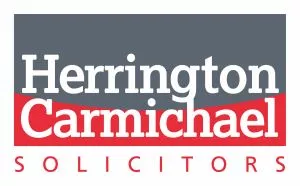You may have heard of EOTs, and how they are an option for business owners to realise the value of their business.
An EOT is an Employee Ownership Trust, which is a trust that allows a company to become owned by its employees.
Benefits for you
If you are thinking of selling your business, selling to an EOT can be a great way to do so tax efficiently. Provided the requirements below are satisfied, you will receive CGT relief on a sale of your shares to an EOT.
What are the requirements?
- The company must be a trading company
- The EOT must only apply settled property for the benefit of all employees on the same terms
However, this requirement will not be infringed if an award is determined by reference to remuneration, length of service, or hours worked.
For example, if an employee bonus was determined in
accordance with remuneration, the calculation could be that each
employee receives a £100 bonus per £1,000 of their
salary – the same basis of calculation means that the
'same' terms requirement is complied with. This method can
also be applied on the basis of length of service, so that
employees who have been with the company longer receive a
more substantial bonus than employees who have only joined the
company recently.
- The EOT must obtain a controlling interest in the company
This means that in relation to the company, the EOT must be entitled to: the majority of shares, voting rights, profits available for distribution, and assets on a winding up. The purpose of this requirement is to ensure that the EOT has effective control over the company's decisions.
The EOT must not meet this requirement immediately before the tax year in which the disposal occurs. However, the EOT must meet this requirement at the end of the tax year in which the CGT relief is claimed (and if it met the requirement at an earlier time in that tax year, it must have continued to meet it throughout the remainder of the tax year).
- The original shareholders must have limited participation in the company
This requirement is that in the 12-months immediately after sale of shares to the EOT:
- the person claiming CGT relief must not be a 5% shareholder of the company; and
- the number of employees or officeholders who are 5% shareholders of the company (and those who are connected with those who satisfy this requirement e.g. relatives), must not be more than 2/5 of the total number of employees. This ratio must not be exceeded at any time in the period beginning on the sale of shares to the EOT, and ending at the end of that tax year.
For example, a company has 2 employees and 1
director who each hold more than 5% of the shares in the company.
The company has 9 employees in total. The ratio here is 3/9
(33.3%). The limited participation requirement is satisfied because
the ratio is not more than 2/5 (40%).
However, if one of the 9 employees is a relative of one of the 3 employees / director who hold more than 5%, that employee will be counted in the ratio. The ratio will then be 4/9 (44.4%), and the limited participation requirement will not be satisfied. CGT will therefore not be available.
CGT relief
If the above requirements are satisfied, you will pay no CGT on a sale of your shares to an EOT. This can be compared to the situation if you sold shares to a regular 3rd party buyer, where CGT would be payable at a rate of 20% on any increase in value since you originally acquired the shares. This can be a huge driving factor if you are considering selling, because you do not 'lose' a huge sum of the sale proceeds through tax.
How does it all work?
Firstly, a trust (EOT) is set up. The original shareholders of the company will transfer their shares to the EOT. The employees of the company will be beneficiaries of the EOT, and the shares in the company will therefore be held for the benefit of the company's employees. The employees will need to be educated on what an EOT means for them, and the benefits of employee ownership.
The following requirements must continue to be met after the EOT has been implemented:
- the trading requirement and all-employee benefit requirement must continue to be satisfied for the remainder of the tax year in which the sale occurs
- the controlling interest requirement must be met at the end of the tax year in which the sale occurs (and if this requirement was met at an earlier time in that tax year, it must have continued to be met throughout the remainder of the tax year)
- the limited participation requirement must continue to be satisfied in the 12-months after the sale occurs, and the 2/5 fraction must not be exceeded at any time in the period beginning with the sale and ending at the end of the tax year
When the trust has been set up, the company will carry on in largely the same way as it did previously. However, the company will be administered by the trust. The trustees will be responsible for ensuring the company is well led, as well as considering the needs of the employees in all decisions.
The content of this article is intended to provide a general guide to the subject matter. Specialist advice should be sought about your specific circumstances.

